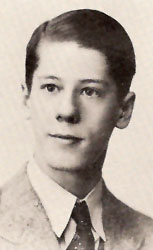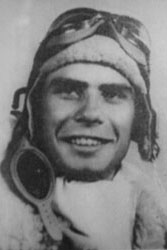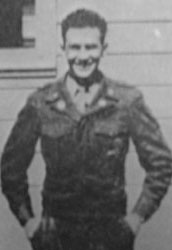 |
C-54 Skymaster 45-543 - Stake
House Fell
7th January 1949 |
 |
C-54 Skymaster 45-543 - Stake
House Fell
7th January 1949 |
Updated 10.11.2010
| Type | Unit | Base | Duty | Crew | Passengers |
| C-54 G Skymaster | 14th TCS (H), 61st TCG (H) 61st TC, CALTF | Rhein Main AFB | Ferry flight for "Vittles" 200 hour inspection | 4 | 2 |
|
|
| Berliners watch a Troop Carrier Group C-54 land at Templehof Airport, 1948. |
The first C-54 aircraft arrived at the American Rhein Main Air Force Base in Germany in mid-November 1948 to join the massive effort supplying Berlin during the harsh winter of the Russian blockade. The new Skymasters had double the cargo capacity of the C-47s and were sorely needed. By January 1949 they had been instrumental in increasing the tonnage from approx. 3000 to some 5,500 tons of supplies a day flown into the city, though the toll on men and machines of this non-stop effort was beginning to show. Even though the USAAF aircraft were only inspected every 200 hours, compared to 100 for the RAF, the American servicing facilities in Germany were stretched to the limit. To cope with the workload, the wartime base at Burtonwood was selected to undertake inspection and overhaul of some of the overworked aircraft taking part in the airlift. One such aircraft was C-54 45-543 which took off from Rhein Main en route for Burtonwood for its "Vittles" 200 hour service, on board were four crew and two passengers and cargo believed to comprise of a number of aircraft engines also being returned to Burtonwood for major overhaul. What should have been a routine flight became a struggle for survival as the aircraft encountered poor weather conditions over the North of England, with low cloud and heavy rain and it drifted from its intended course, ending up over the high ground of the Trough of Bowland.
 |
 |
 |
 |
|
| 1st Lt. Richard M. Wurgel | 1st Lt. Lowell A. Wheaton Jr. | Sgt. Bernard J. Watkins | Cpl. Norbert H. Theis | Capt. W. A. Rathgeber |
| Name | Position | Status |
| 1st Lt. Richard M. Wurgel | Pilot | K. |
| 1st Lt. Lowell A. Wheaton Jr. | Co-pilot | K. |
| Sgt. Bernard J. Watkins | Engineer | K. |
| Cpl. Norbert H. Theis | Radio Operator | K. |
| Capt. W. A. Rathgeber | Passenger | K. |
| Pte. R. E. Stone | Passenger | K. |
The aircraft had taken off at 13.12 hours from Rhein Main AFB near Frankfurt, after a delay due to loading difficulties, for the two hour forty five minute flight via Amsterdam, Horsham St Faith and Shawbury. Although slightly over-loaded, this was not considered a problem and at 16.28 the aircraft was over the Shawbury and was given a bearing for Liverpool and told to contact Liverpool Approach Control, but contact could not be made and at 16.30 contact was made with Burtonwood. The pilot estimated his position using his instruments and the following conversation with Burtonwood tower was recorded after the Tower operator had gained clearance from Liverpool Control via the telephone.
"Burtonwood Tower this is 45543, over"
"45543 this is Burtonwood Tower, What is your present position and what are your flying conditions?"
"Tower, I am approximately two miles South of the field and have just broken clear of the clouds at 2200 feet. I will be completely VFR in a few seconds, over"
"Roger 45543, this is Burtonwood Tower. Liverpool Control advises they have no known traffic in Control Zone and you are cleared into the Control Zone, over"
"45543 to Burtonwood Tower, Roger I am now completely VFR at 1700 feet"
"Burtonwood Tower, Roger. You are cleared to make a VFR approach. Advise tower before you encounter instrument conditions. For your information the Burtonwood Range may be used for homing purposes only on 214 kcs, over"
"Roger, 214 kcs"
The time was 16.42 and the operator then handed over the mike for the local weather report to be given to the pilot, but the aircraft could no longer be raised.
At approx. 16.45 witnesses on the ground near Garstang heard the aircraft's engines as it descended through the cloud and then it appeared out of the mist only some 80 feet above the ground. Seconds later and probably before the pilot realised the danger of his situation, the aircraft was seen to strike the face of Stake house fell as there was a flash through the mist as it exploded on impact. Subsequent investigation found that a strong signal from a BBC radio station North of the Burtonwood base was interfering with the Burtonwood Range signal, causing the radio compass on board aircraft to continue to indicate that the base was to their North even after they had passed to the North of the Range Station - following this incident the frequency was changed and the problem did not reoccur.
Despite being two and a half miles from the nearest village it is known that many people visited the crash site of this aircraft shortly after the incident and that many items were taken from the wreck, apparently with the consent of the American servicemen "guarding" it. One of the first on to reach the site described to us how the engines from the cargo lay scattered across the fell together with many hypodermic syringes and of four bodies laid under one wing together with a dead dog – a pet of one of the passengers it would seem. The engines from the cargo and those from the plane itself lay on the fell for many years, until apparently recovered for scrap in the 1960s and medical supplies from the cargo could be found until quite recently. Today however relatively little lies on the surface to remind us of the tragedy in 1949 and permission must be obtained from the Estate Manager, Gamekeepers and Farmer before visiting this site as it lies on a private grouse moor.
Small parts jammed in amongst the rocks |
The shattered nosewheel U/C leg. |
On examining the site, it becomes obvious that the plane impacted on a steep scree slope and has been dismantled and burned on the site, with the heavier items rolling to the bottom where they now lie. No engines remain at the site, these having apparently been taken for scrap some time ago, only some very rusty reduction gears, which do appear to have come from the aircraft's own engines, rather than those carried as cargo. All three undercarriage legs lie at the site, the two main oleos being intact and are surprisingly large and heavy forgings, with the smaller nose assembly being broken and only the upper section being visible. Four stainless steel firewall and exhaust collector assemblies are present and again seem to originate from the aircraft's own engines and exhibit varying degrees of destruction, illustrating the force of impact at the time of the crash. An examination of the scree slope revealed many small items jammed in amongst the rocks, including hundreds of fragments of medicine bottles, smashed and melted radio valves (far too many to be from the aircraft's own radio equipment), control cable tensioners, electrical components, cargo strap fittings and a release cable from an airman's parachute.
Firewall and exhaust collector assemblies |
The C-54's massive main U/C legs. |
An unusual postscript to this story came to light during our investigation, in the form of an often-repeated tale of a visitor to the crash site being killed some years ago, as a result of tampering with the wreckage. Several versions have been recorded involving a young farmer's daughter as the victim and the cause being exploding ordnance or toxic medical supplies from the cargo. Further research uncovered the facts and the tragic story proved somewhat different from these accounts, but remains a sound warning none-the-less. The lady in question was in fact in her 40s & was unraveling a parachute at her home, which had been found at the crash site by her brother a week after the crash. Unknown to them, the chute was in fact a phosphorous flare pack & when she reached the canister it exploded, causing serious burns, which resulted in the unfortunate woman's death some 12 weeks later in hospital.
Pte. Ronald E. Stone |
His grave at Mt. Sterling, Kentucky |
Further information has now emerged on one of the passengers on this fateful flight courtesy of Gary L. Stone, the nephew of Pte. Ronald E. Stone. It seems that 20 year old Pte. Stone had been stationed in Germany, but had transferred to England where he had met and begun a relationship with a young lady. He had been called back to Germany on official business for a few days and naturally was keen to return to England to see his girlfriend as soon as was possible. To this end a friend pulled a few strings on his behalf, no doubt as a favour & got him on the next available flight - C54 45-543! It seems that Ron Stone was coming to the end of his tour of duty and with a mind to the future had, in his letters home, expressed his desire to enter the clergy on his return. Sadly the dreams of this young man were not to be, as his life was tragically cut short on a bleak Lancashire hillside.
Aldon P. Ferguson, Russell Brown, Mr. V. Richmond, David W. Earl (u/c photo), Mark Sheldon, Access by kind permission of Estates Manager. Gary L. Stone (Ronald E. Stone photos). Crew photos provided by the Berlin Airlift Historical Foundation, with thanks to Ronald Hirst and the hero's families. Weehawken High School Yearbook 1939 (Richard M. Wurgel photo).
This page & all articles on this site Copyright © Nick Wotherspoon 2000